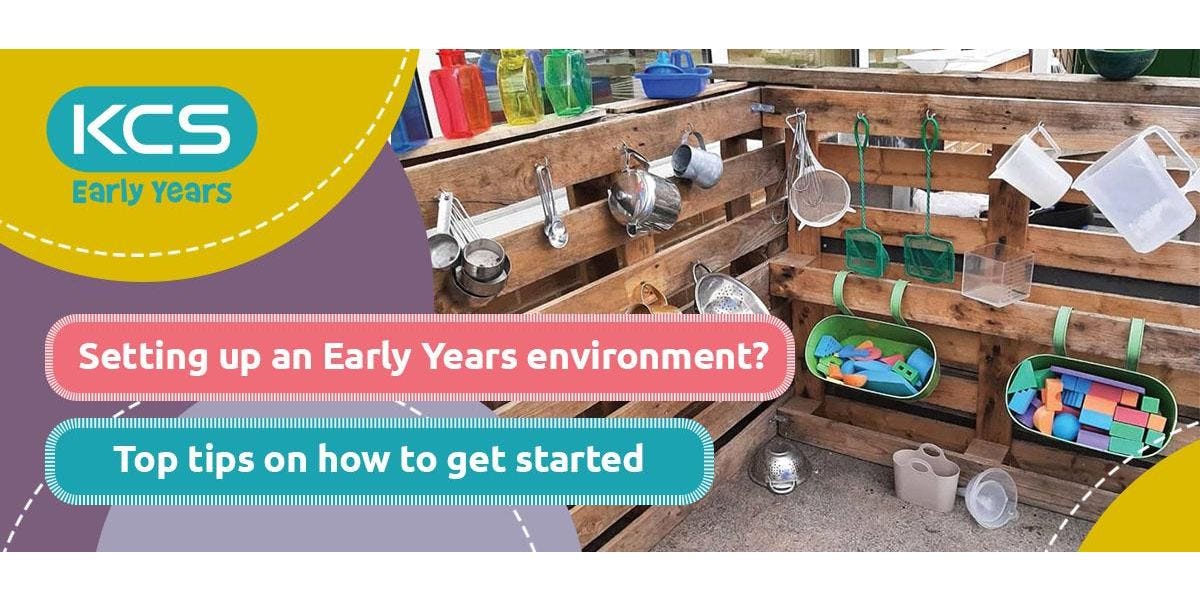Setting up an early years environment can be quite daunting; whether it's an inherited classroom full of treasures that need sorting or a brand new space to start from scratch with.
I have experienced both and neither was an easy feat. In these situations it can be difficult to know what to keep, what to throw and what to source. There is, however, no need to panic!
Take a step back and really think about what it is that you want from the space. What is your end goal? This will really help you to consider your priorities. Although I am sharing my perspectives as an early years teacher, these designs can be adapted and implemented into any setting.
What should we consider when designing and setting up an inviting early years space?
We started with our little ones at the heart of our design - what it was that our children wanted and what was it that they needed? Typically, our children come to us with varying levels of speech and language. We therefore wanted to create an inviting space where language could flow.
We enlarged our home corner, creating a kitchen space full of the familiar (pots, pans, cutlery), and the unusual (coffee grinders and old metal scales). Many of these objects we sourced from car boots, charity shops, donations from our local community and even our lofts at home!
We upcycled some of our wooden kitchen units by giving them a lick of paint. We also created a living space with a variety of accessories and clothing that would both be both familiar to the children but also would provoke curiosity, interest and encourage rich vocabulary and conversations.
Our little story telling shelves also support communication and language in our setting. At the beginning of the year, we included props from familiar stories shared in their nursery settings and at home. These helped settle our children and enabled them to repeat stories that they already knew.
We also added a range of loose parts which enabled our little ones to read their own stories. We engaged in conversations, provided key vocabulary and modelled sentence structure. The impact of these transformations was our little ones acquiring a greater level of vocabulary and using more extended sentences.
When setting up our environment, creating large scale spaces was also an important factor to consider. We carefully designed our outdoor space to ensure that our children have the freedom to be as physical as they can be.
We created a space where our children can run, climb, pull, jump and lift on our fixed climbing equipment. They have daily access to this large space, which we also enhance with hoops, tunnels and tyres so they can create their own obstacle courses.
There are also spaces for our children to explore and be creative on a smaller scale. The cable drums were donated and the road tracks were made from recycled pieces of our shed roof! We used pallets in our outside setting to act as little dividers, as otherwise, it’s one long space.
The impact of these repeated and varied opportunities to explore and play with the small world and water tray is that our children are developing control and confidence with smaller objects.
We also designed our environment to provide rich opportunities for small movements. From conversations with parents and our feeder settings, helping our children to develop fine motor skills was a priority. We redesigned our environment to provide plentiful experiences and opportunities for fine motor.
In our creative areas, we opted for open shelving units which were easily accessible and gathered empty jars and crates to use as storage. We provided materials which could be pinched, squashed, ripped, pegged and cut.
We created little areas for mark making, providing chunky crayons and pencils to begin with, alongside pattern making cards and letter formation cards. The provision in these areas develop as the control, interest and confidence does and we see children begin to record letters and words.
Although we have areas for mark making, it is encouraged in all areas of our provision, from making marks in sand, to creating recipes in the mud kitchen and labelling the vegetables we have planted outside. The impact of these changes has been more engagement in mark making and more independence when accessing these areas of provision.
There is no 'right way' to set up your provision. It doesn't need to cost a fortune to implement any changes and will not happen overnight. Careful planning and starting with your children at the heart of your design will help to focus on your priorities and give you a great starting point.








